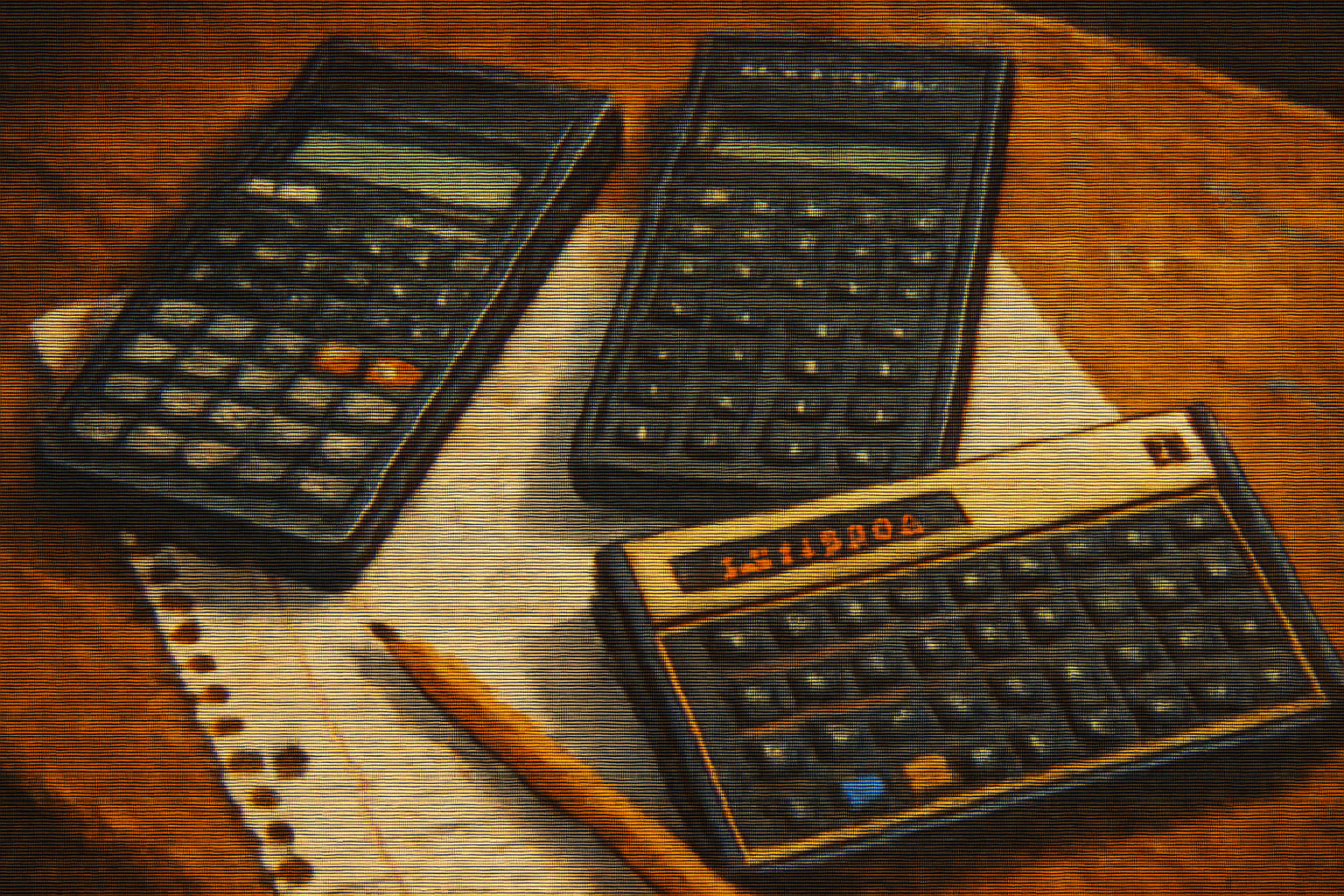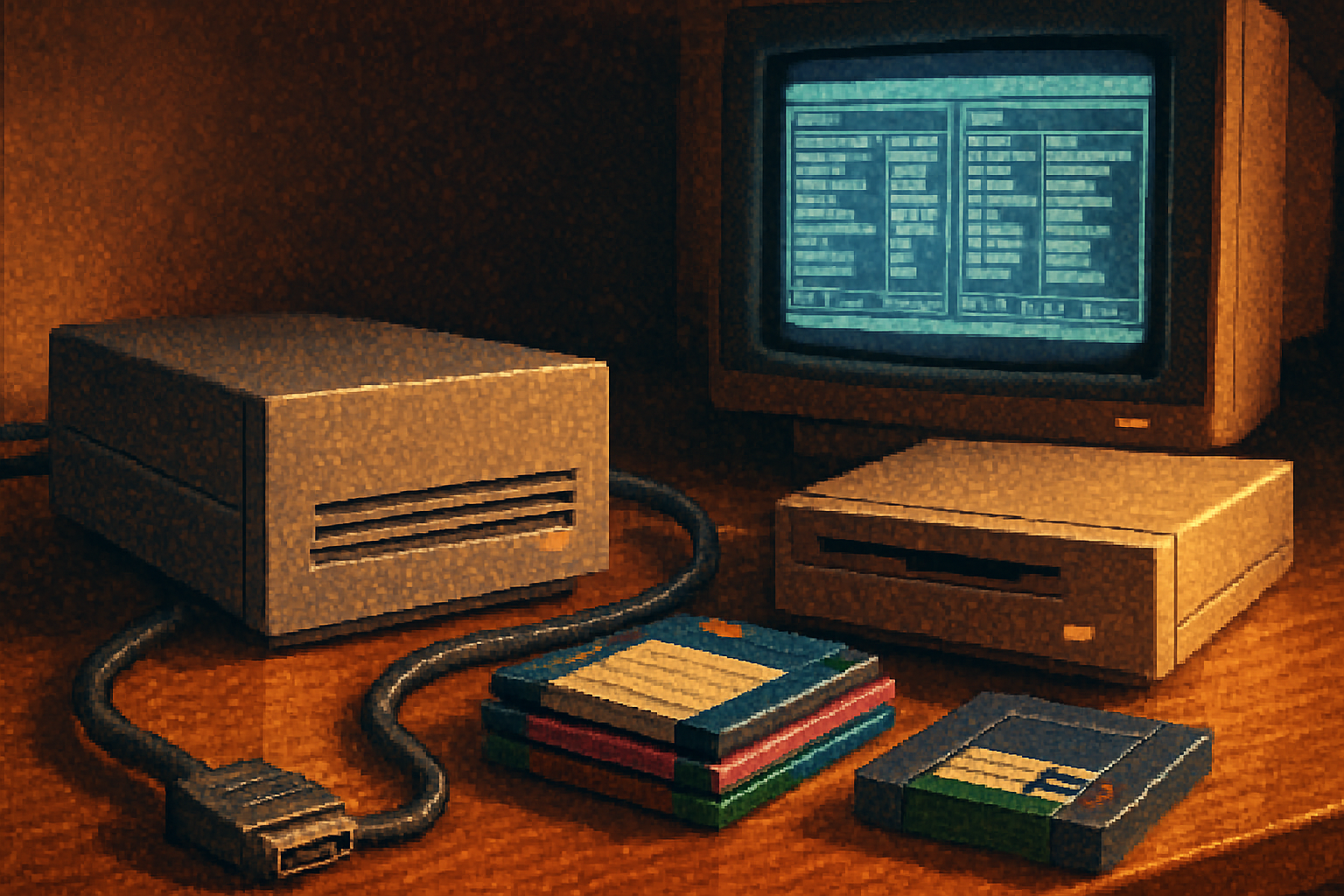· culture · 6 min read
The Pocket Calculator: A Forgotten Hero of the 80s and 90s
How pocket calculators - the scientific, financial and graphing devices of the 1980s and 1990s - reshaped classrooms, workplaces and product design, and why their influence still echoes in today’s devices.

Introduction
In the 1980s and 1990s a small, rectangular object with a grid of plastic keys quietly changed how people learned, worked and thought about computation: the pocket calculator. Far from a trivial gadget, calculators were a bridge between mechanical arithmetic and the microprocessor-driven world we now take for granted. They made complex computation portable, affordable, and democratic - and their fingerprints are all over modern consumer electronics.
A brief history in context
Electronic calculators evolved quickly from bulky laboratory equipment in the 1960s to truly pocketable devices by the mid-1970s and then ubiquitous by the 1980s. Major players like Casio and Texas Instruments turned rapid improvements in integrated circuits and low-power displays into low-cost products for students and professionals alike.
- Early milestones and the miniaturization trend are well summarized by the Computer History Museum’s coverage of calculators, which highlights advances in chip integration and display technology (Computer History Museum).
- For a general overview of the technology and its evolution, the Wikipedia article on calculators is a useful reference (Calculator - Wikipedia).
Why calculators mattered for education
Pocket calculators transformed math education in three main ways:
- Accessibility of computation - Students could execute arithmetic and transcendental functions (sine, log, exponentials) quickly without long manual computation, letting instruction emphasize problem solving and modeling rather than pencil-driven arithmetic.
- Curriculum changes - The availability of calculators influenced curricula and assessment design. New topics and problem types that relied on numerical exploration - data fitting, iterative methods, applied modeling - became feasible at earlier grades.
- Exam policies and equity debates - As calculators spread, schools and exam boards grappled with which models to allow. The restrictions and permitted-function lists (basic vs. scientific vs. graphing) shaped how math was taught and assessed, and raised questions about fairness and computational fluency.
Popular student models included the Texas Instruments TI-30 and the Casio fx-series; these low-cost scientific calculators were staples of classrooms worldwide (Texas Instruments - Wikipedia, Casio - Wikipedia).
Design, ergonomics and affordances
The pocket calculator is a case study in pragmatic industrial design: a compact, highly legible display; rows of tactile keys; durable plastics; and long-lived batteries.
- Displays evolved from LED (power-hungry and bright red) to reflective LCDs that enabled far longer battery life and thinner devices. This helped calculators become truly pocketable and always-ready.
- Key layout was engineered for speed and error avoidance - grouped function clusters (numbers, operators, memory, trig/log buttons), generous key spacing, and distinct shapes or colors for frequently used functions.
- Alternative input philosophies appeared - Hewlett-Packard’s adoption of RPN (Reverse Polish Notation) created a loyal user base that prized speed and the reduced need for parentheses (
These design choices emphasized reliability, discoverability and tactile feedback - qualities that later influenced handheld device interfaces.
Everyday and professional uses beyond the classroom
Calculators found homes across professions. Financial analysts relied on models like the HP-12C for time-value-of-money calculations; engineers used scientific calculators for quick unit conversions and trig; shopkeepers, scientists, and hobbyists used basic models for straightforward arithmetic. The devices’ predictability and offline nature made them indispensable tools in situations where a phone or PC wasn’t practical.
Cultural impact and identity
In the 80s and 90s, calculators were more than tools - they were cultural artifacts. Brands became identifiers (“I carry a TI”), and certain models achieved near-iconic status among students and professionals. The calculators even showed up in pop culture visuals and classroom rituals (secretly passing notes in the calculator’s solar glare). There was also a subculture: advanced users sharing tricks, program snippets for programmable calculators, and the beginnings of user communities exchanging code and tweaks.
The decline - and why it wasn’t sudden
The arrival of inexpensive personal computers in the 1990s and the later ubiquity of mobile phones gradually eroded the calculator’s dominance for casual users. But the decline was nuanced:
- Specialty devices persisted - graphing calculators remained required in many curricula because they provided standardized, exam-acceptable computation and were designed with exam constraints in mind (
- Institutional inertia - schools and exam boards were slow to change permitted-device policies.
- Reliability and offline guarantees - many professional contexts still favored dedicated calculators for their deterministic behavior and lack of distractions.
So while casual use shifted to multifunction devices, calculators remained in pockets, backpacks and briefcases for decades.
Legacy: how pocket calculators shaped modern tech
The calculator’s impact is visible in several domains:
- Miniaturization and low-power design - the push for tiny, efficient processors and low-energy displays in calculators helped drive techniques later used in mobile phones and wearables.
- Interface conventions - clear numeric keypads, tactile feedback and chunked function groups influenced the design of numeric input on phones and POS devices.
- Mental models of computation - exposure to calculators normalized interactive, immediate computation for multiple generations - a mindset that helped people accept and adopt smartphones and ubiquitous computing.
- Programmability and embedded scripting - programmable calculators were an entry point for many into coding and algorithmic thinking. Languages and simple program structures on calculators provided early experience with loops, conditionals and numerical methods.
Academic and industrial advances in low-power electronics and LCD tech-pioneered in part to make calculators practical-fed directly into the components pipeline for later handheld devices.
Collector communities and nostalgia
Today, there’s a thriving collector and enthusiast scene for vintage calculators. Hobbyists restore units, document firmware and create emulators. Some cherish niche features - like HP’s RPN - while others collect colorful Casio designs or durable engineering workhorses. Collectors preserve the tactile, design and historical qualities of devices that once defined an era.
Resources like the Computer History Museum and numerous enthusiast sites keep the history alive and provide technical documentation for restoration and emulation projects (Computer History Museum - Calculators timeline).
What we forget at our peril
When we dismiss the pocket calculator as an obsolete gadget, we risk overlooking key lessons:
- Purpose-driven design - calculators solved a specific problem exceptionally well. Their longevity shows the value of focused, reliable products.
- Human-centered affordances - the calculators’ tactile keys, immediate feedback and predictable behavior made them approachable tools for non-experts.
- Educational transition tools - calculators didn’t replace numeracy; they reframed it. They gave learners new ways to explore problems and introduced computational thinking early on.
Conclusion
The pocket calculator is a quiet hero of late 20th-century technology. It made computation portable, informed how educators approached math, influenced interface and low-power electronic design, and provided a gateway to programming and applied numerical thinking. Though largely displaced for casual use by smartphones and PCs, the calculator’s design philosophy and technical innovations persist - visible in the compact, power-efficient, human-centered devices we now use every day.
Further reading and references
- Computer History Museum - Calculators timeline: https://www.computerhistory.org/revolution/calculators/3/70/
- Calculator - Wikipedia: https://en.wikipedia.org/wiki/Calculator
- Graphing calculator - Wikipedia: https://en.wikipedia.org/wiki/Graphing_calculator
- Texas Instruments - Wikipedia: https://en.wikipedia.org/wiki/Texas_Instruments
- Casio - Wikipedia: https://en.wikipedia.org/wiki/Casio
- HP-12C - Wikipedia: https://en.wikipedia.org/wiki/HP-12C



